Tatsuzo Shimaoka, 88, Master of Pottery, Is Dead
Tatsuzo Shimaoka, a potter who was designated a “living national treasure” in Japan for his mastery of his craft, died on Dec. 11 in Mashiko, Japan, where he had maintained a studio since 1953. He was 88.

Tatsuzo Shimaoka in 1983.

A wood-fired vase using rolled rope by Mr. Shimaoka.
The cause was a stroke, according to Ken Matsuzaki, a former apprentice.
Mr. Shimaoka’s pottery, primarily tablewares, expressed the philosophy that beauty was to be found in utility, and art in humility. The work was characterized as “mingei,” a term created from “minshuteki kogei,” or “craft of the people.”
The term reflects an appreciation of the Japanese folk traditions that artisans like Mr. Shimaoka’s teacher, the potter Shoji Hamada, began to look to early in the 20th century in the face of rising industrialization. Mingei philosophy stressed the connection between the quality of a craft object and the spirit with which it was made.
“You can’t make beautiful things unless your character is also that,” said Martha W. Longenecker, founding president and director emerita of the Mingei International Museum in San Diego, speaking of Mr. Shimaoka. Ms. Longenecker studied pottery making with him in 1962 in Mashiko. The museum exhibited a retrospective of his work in 2000.
“Shimaoka was a very humble man,” Ms. Longenecker said. “He was a healthy, real person, in body, mind and spirit.”
She said Mr. Shimaoka’s achievement was to distill more than 5,000 years of pottery making in Japan into something unique, often amounting to great art. His work is included in the ceramic collections of the Metropolitan Museum of Art in New York and the Victoria and Albert Museum in London. He was designated a “living national treasure” by the Japanese government in 1996.
Tatsuzo Shimaoka (pronounced TAT-soo-zo Shi-MAH-oh-kah) was born in Tokyo in 1919, to a family of ornamental braid makers. Rather than have him enter the family business, his mother insisted that he be educated. He studied industrial ceramics at the Tokyo Institute of Technology, inspired by a visit to the Japan Folk Crafts Museum in 1938, where he encountered mingei philosophy, and its objects, for the first time. In interviews Mr. Shimaoka compared its impact on his future to rain on soil.
He graduated in 1941, served in World War II in Burma and returned to Japan, moving in 1946 to Mashiko, a town with a tradition of pottery making, an hour north of Tokyo. He became an apprentice of Shoji Hamada, one of mingei’s founding proponents.
In an interview with Clay Times, a ceramics journal, Mr. Shimaoka said he learned from Hamada that craft “is not to be learned by intellect, but with the body.”
“Technique is not to be taught, but to ambitiously acquire,” he said. Hamada encouraged him to develop his own style of work, beyond the basic tenets of mingei. Mr. Shimaoka turned to his own father’s craft, braid making. He began using elaborate braid to decorate vessels by pressing it into the clay when it was still wet. It was an original technique that made a deft reference to a tradition: the rope decoration of prehistoric Japanese Jomon pottery.
Mr. Shimaoka washed the vessels with a white liquid clay, wiping away the excess and leaving a painted tracery in the braided impressions, a Korean decorative device introduced to Japan in the 16th century and popularized by tea masters on tea bowls. He called his style Jomon Zogan.
Louise Cort, curator of ceramics at the Freer Gallery of Art and Arthur M. Sackler Museum at the Smithsonian in Washington, said that Hamada and others had a special interest in Korean craft tradition.
“It represented a kind of purity and antiquity that had disappeared from the Japanese craft movement by the 20th century — a pure world before industrialization,” Ms. Cort said. “Shimaoka took Korean craft tradition, plus the particular patterning of the cords that his father had made, to make a contemporary version of old techniques.”
Mr. Shimaoka’s reputation grew quickly as his work was exhibited in department stores in Japan and then abroad. In 1964 he went on a three-month teaching tour of North America and began accepting apprentices.
One was Randy J. Johnston, now a potter and professor at the University of Wisconsin, River Falls. He studied with Mr. Shimaoka in 1975. Mr. Shimaoka, he said, told him that in taking students he felt he was repaying a debt to his master, Hamada. Mr. Shimaoka himself would go on to serve as master to several generations of apprentices.
“Shimaoka was a very driven person,” Mr. Johnston recalled. “We worked seven days a week. He pushed himself hard, with the large number of exhibitions. But he was not dictatorial or oppressive. He always seemed to find time, graciously taking in students, or welcoming visitors to the pottery.”
Mr. Shimaoka is survived by his children, three of whom live in Mashiko: a son, Kei Shimaoka, who will take over the studio; a daughter, Yoshiko Fudeya, a glass artist; and Ryuta Shimaoka, another son. His other survivors include his daughters Kyoko Sekita Nomura and Chizuko Kuroda, both of Tokyo, and eight grandchildren. Mr. Shimaoka’s wife, Fumiko, died four years ago.
Ms. Longenecker observed that, true to itself and to the spirit of mingei, Mr. Shimaoka’s work evolved over the years, as he himself might have in life.
“It becomes more spontaneous, without thought, a fuller expression, more natural,” she said. “Continually with more ease. Skillful, but with a flow.”
|
| ||||||||||||||||||||||||||||||||||||||||||||||||||
| |||||||||||||||||||||||||||||||||||||||||||||||||||
Copyright (c) 2005 CERAMIC ART GALLERY MOTOKO All Rights Reserved.
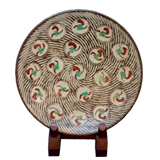
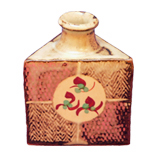
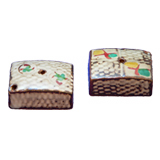
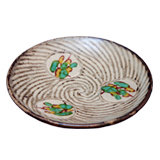 6客組4寸" name="photo" class="top-img" height="160" width="160">
6客組4寸" name="photo" class="top-img" height="160" width="160">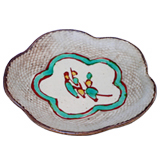
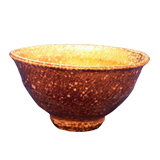
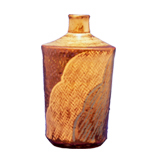
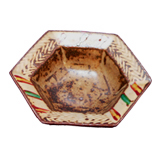
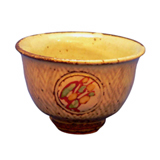
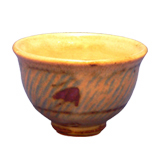
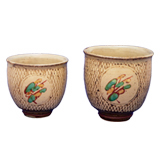
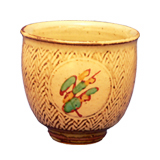
沒有留言:
張貼留言
注意:只有此網誌的成員可以留言。